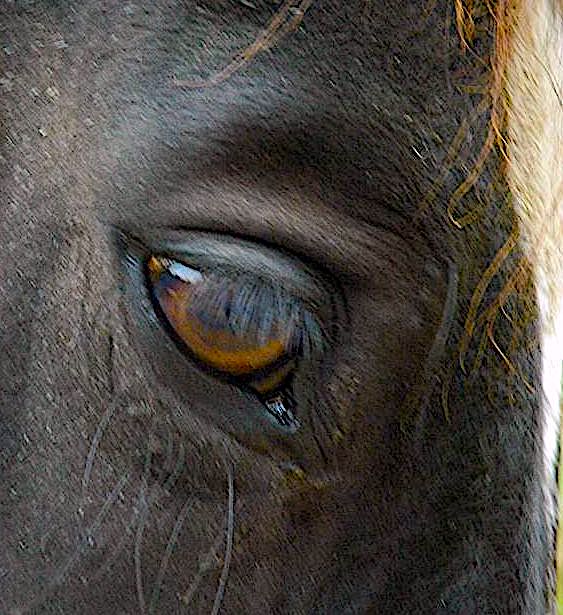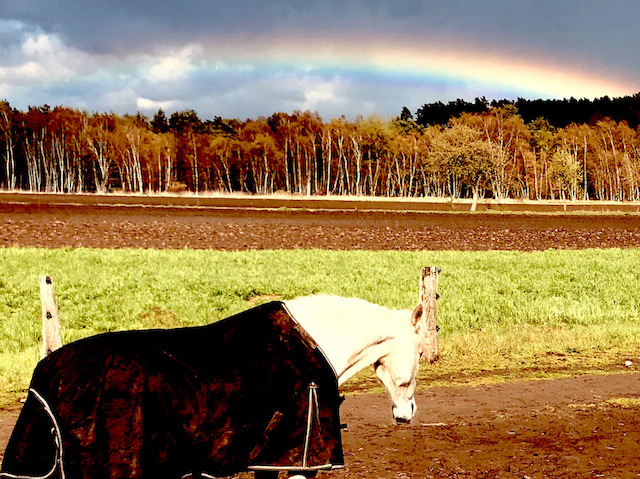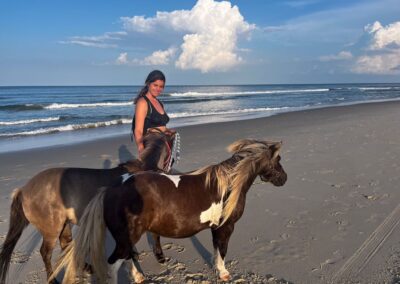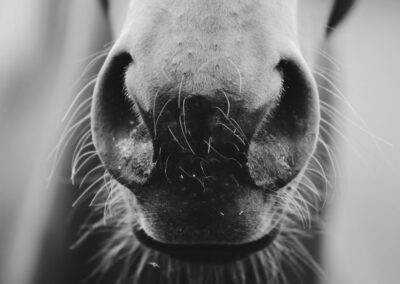Learned helplessness
What is learned helplessness?
Learned helplessness is the behavior exhibited by subject after enduring repeated aversive stimuli beyond their control (source:Wikipedia). It is often experienced by people at war or reception camps, prisoners, people with dreadful diseases or disabilities. Learned helplessness often causes depression, a severe mental disease that can lead to apathy and resignation.
Horses can experience learned helplessness, too
Not only humans but also horses can end up with learned helplessness. Unfortunately, wrong handling and poor husbandry often lead to learned helplessness. Certain training concepts specifically aim towards learned helplessness, such as:
- “Chase away” technique in a round pen: horse learns that it can’t escape from humans.
- Flooding: overly desensitizing a horse with a feared object or situation to extinguish an emotional response ( tying a bag or dummy to the horse, etc.).
- Hyperflexion: riding and lunging a horse with its poll and neck tightly flexed (“face behind the vertical”).
- Asking a horse to move away from its human over and over again.
- Horses that are forced to live most of their day in a stall without immediate contact to conspecifics.
It is not unusual that horses suffer from mental and physical abuse during all these “training techniques”.
A horse learns that there is no escape from any situation controlled by its human. If the method is successful, horses give up their right of refusal and function automatically just like a robot.
At first glance, some training methods that lead to learned helplessness appear to be peaceful. They are called horse-friendly methods because only little to no physical violence is used. But the opposite is the case.

Symptoms of learned helplessness
Certain indications can help to identify learned helplessness :
- Steady gaze with no emotion showing on the face (“Dead eyes”)
- Strongly “withdrawn” horse
- Minor interest in the surroundings
- Lack of interest or personal initiative
- Horse doesn’t attempt leaving an aversive stimuli or situation (For example: horse remains in hyperflexion despite of slack in the reins)
- Lack of appetite
- Dull coat
- etc.
Several show horses are unable to find resolutions to difficult situations even when a solution is accessible.
The audience only sees the end result and celebrates the well-trained horse that doesn’t flinch even if the trainer pelts it with an object.
But be aware!
Not every well-behaving, perfectly trained and relaxed horse got there due to cruel techniques and learned helplessness.
However, a look behind the scenes is important to make an informed judgement. Get as much information as possible about your horse trainer and find out what methods they use to make a horse cooperate. Make sure, your horse gets a chance to say “No” and always check on its facial expressions. Watch out for signs of resignation, introversion, deadening and joylessness. Train your understanding of what learned helplessness looks like.
Did you like the article?
Share your experiences…




0 Comments